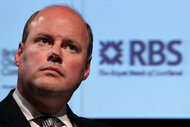The objections can take creative forms, like the jar of pennies meant to symbolize retiree finances that was sent to Lynn J. Good, chief executive of the Duke Energy Corporation, as a rate-increase protest on her first day of work in July. But she also received a bunch of sunflowers the same day from Greenpeace to encourage the utility to go green, said Tom Williams, a Duke spokesman.
“That shows how goals differ,” Mr. Williams said. “Some advocates want clean energy, and others want cost-effective, and no one wants their rates to go up.”
Many retirees are unswayed by such comments. They are moving away from lower-key activities like attending meetings, passing out fliers or making phone calls to more visible tactics to express displeasure over utility company requests for significant sums to cover everything from installation of smart thermostats to managing trees and vegetation.
At public rate hearings in South Carolina in June, opponents shook Mason jars full of pennies to show their displeasure with Duke’s rate proposals. Several rate protesters in North Carolina staged a skit recently, with one dressed like Rich Uncle Pennybags from the Monopoly board game, outside the state regulator’s office in Raleigh.
In other rate protests, AARP in Arizona gave away Christmas stockings stuffed with lumps of coal, and in Idaho the group awarded three utility companies “turkey” awards for attempts to raise water and electric bills.
AARP began stepping up its efforts against rate increases two years ago, prompted by survey results showing that those 50 and older spend the most, proportionally, of all age groups on electricity, and people over 65 list utility bills as their biggest annual expense. The AARP Public Policy Institute study was based on Bureau of Labor Statistics data.
AARP’s multistate campaign has spread, with mixed results, to 38 states, as the organization has begun to more assertively seek publicity, campaign and, in some cases, take legal action to protect retiree interests in rate requests. The stakes have risen as utility providers, especially those in areas hit by strong storms, seek revenue to shore up infrastructure and for tree-cutting and other maintenance that may have been deferred in earlier years.
“It’s unfair for utilities to ask for more money to upgrade their operations,” argued Janee Briesemeister, AARP’s senior legislative counsel and utilities expert.
“The company can’t just say, ‘We need money between rate cases, and we’ll tell you later what it’s for,’ ” she said, adding that such requests customarily are part of a rate-making process that differs somewhat state by state, but involves the utility’s providing detailed financial justification.
Mr. Williams of Duke conceded that “there is a need to take the lumpiness out of the rate process,” by spreading out increases over time. But utilities say costs for new plants or environmental upgrades can be recovered in rate increases after the improvements come online; such increases typically involve a settlement after regulators hear from all sides, including retiree protesters.
In South Carolina, AARP adopted the slogan “Raise Your Voice Before They Raise Your Rates,” with the image of the spilled Mason jar, to fight a proposed increase in electricity rates. Campaign materials were sent to 25,000 members by mail and appeared on the Internet and in local newspapers.
The campaign raised attendance at public hearings on a request by Duke Energy for a 16.3 percent increase in monthly residential bills, said Patrick Cobb, AARP state assistant director. The increase would have added nearly $214 to the average yearly bill, according to AARP. Instead, the eventual settlement, not yet completed, will raise rates about 10 percent over two years for the utility’s 540,000 customers.
Even in a state like Arizona, with some 800,000 AARP members, large numbers of retirees do not ensure complete victory. Dressed as Santa Claus, Steve Jennings, AARP’s state advocacy director, used holiday stockings with lumps of coal to urge state regulators to vote against a proposed rate rise. Regulators eventually approved a somewhat smaller increase.
“Getting out there doesn’t mean you are going to win,” Mr. Jennings said, “but it does make you a player.”

Article source: http://www.nytimes.com/2013/09/10/business/retirementspecial/shaking-pennies-and-fists-against-utility-rate-increases.html?partner=rss&emc=rss

